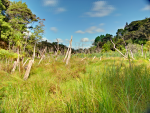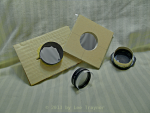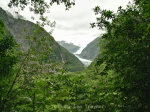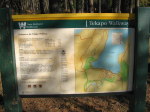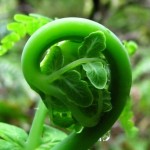Thanks to old friends Tom Bishop and Rayna Ramsay for organising some functions for me in Auckland; Hamish Spencer for getting the ball rolling in Dunedin and to new friends Shinichi Nakagawa, Jenny Rock, Katie Brockie for organising the three lectures in Dunedin (for Zoology, Skeptics in the Pub called the Church, and Science Communication) and to Michael Edmonds for organising the talk in Christchurch (Skeptics in the Pub, but their pub has fallen down, so it was Skeptics at CPIT, with the pub for pizza and beer afterwards). To all those who attended my talks and demonstrated that they could think: congratulations. Continue reading
Tag Archives: Canon
3. Auckland
Chinara’s
Tuesday, February 5: Sunny with a few clouds and very windy
GPS Tour
Chinara had gotten into her mind to buy a Canon 450D for $100 and wanted to pick me up around lunchtime and see if the camera was performing OK so I had pretty much a free morning. Spotted a monarch braving the winds and got the camera running and succeeded in taking a few shots. As I was getting hungry I made avail of one of the apples. Continue reading
Camera Extras
Youtube Video
With the camera now functioning like it cost ten times the price thanks to the possibilities of CHDK, it was time to look at a couple of hardware issues.
Filters. A polarisation filter is a major game-changer, as anyone wearing polarised sunglasses can tell, because it cuts down reflection from water and glassy surfaces and thus also the haze in the air that washes out detail at large distances. With a pol filter the sky is bluer, the grass is greener, and the hills are closer. Continue reading
Hacking the Canons: CHDK
CHDK is a set of tools allowing the user full control over the operation of a large number of the cheaper Canon point&shoot cameras. After all, a camera nowadays is more that a box with a hole in it; everything is, of course, controlled by a microprocessor. With suitable access to the processor, the camera becomes like any other universal machine and can be programmed to do what you like with it. I can vividly remember my disappointment when I thought that I could use the time delay function for a sort of limited time lapse, and all the camera did was wait for the set time and take the ten shots in quick succession. If the camera can count to 30 once, why not continue the process. Continue reading
Searching for a Bracketing Camera
Before it got all complicated, let’s just go back to the beginning: I wanted a camera that would automatically take exposure series (brackets) so that I could paste them together and achieve a result as good as or better than the eye can see. Without an automatic mechanism, I’d be stuck with taking one shot after another and having to wait for the camera to settle down between each shot. Continue reading
Battle of the Bulge
A common form of photographic distortion is barrel distortion and its counterpart pincushion. Straight lines such as architectural features become curved and this is distracting, not only for viewing buildings, but also in portraiture, where the barrel distortion will easily make you 5 or so kgs overweight. Photographers will compensate for this by using the zoom to reduce the amount of distortion (and this, as it turns out, is true, although not the whole story). Continue reading
Panoramas and an Unsuspected Solution
Canon provides its cameras with software that is intended to cause baldness. ZoomBrowser EX is an insidious piece of software that plays around with the EXIF data on the camera, and PhotoStitch will join up your panoramic images like magic. Yeah, right. And then another 19 (nineteen) programs (!) install themselves on your machine, none of which have any use whatsoever. Continue reading
Bracketing
A major drawback of digital photography, and one that I have been aware of all along, is the lack of dynamic range, the difference between how dark is going to finish up as black, and how light will result in pure white. The closer these two values are, the greater the contrast, but there will be no detail visible in light or dark sections. The eye and its brain have an extraordinary dynamic range which allows us to see details both in the very dark and the very bright at the same time. Continue reading
Green Light
The go-ahead for the new adventure came late last week, after a couple of weeks of prelegal danse macabre. Anyhow, it’s there now, and the final preparations can begin in earnest.
For begun they have well before this time last year, when I was originally planning this trip. There have been plans and preparations, and prices to compare and check again. One of the most comprehensive questions covered was that of photography, although that was no longer a question of what camera to take, but rather how to deal with all of the eventualities that hacking the current set of three cameras has brought with it. Continue reading

